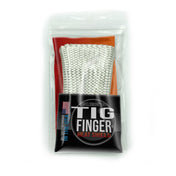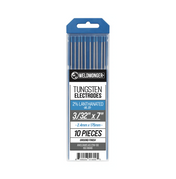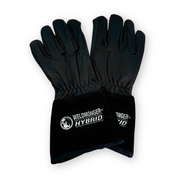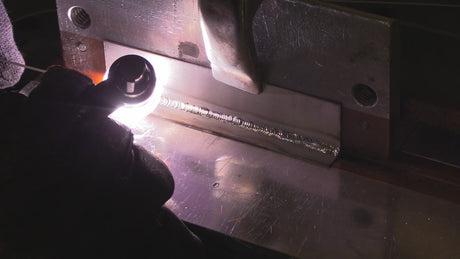Tig welding stainless steel
Please leave your comments on what videos you would like to see here as well as what products you would like to see on our store here at Weldmonger.
This video shows tig welding a 2 pass fillet weld tee joint on 1/4" stainless steel.
Then it shifts gears into a .056" (1.4mm) lap joint.
A Furick jazzy #10 ceramic cup is one of my favorite cups for tig welding stainless steel, cold rolled steel, and 4130 chromoly.
P.S If you already tried the ceramic, and you want to give the glass a try.. Here is a link to the Furick jazzy #10 glass cup.
We made a special bundle for you that includes a 2 pack of Jazzy 10 ceramic cups, a TIG finger®, and a gas lens adapter kit that not only works with the jazzy 10 cups but also lets you use any other Furick cup like the 8 pro clear cup.
This bundle is a no brainer for you if you TIG weld stainless or chromoly.
Primeweld made a graphic with the common weld defects in welding stainless steel. Check that out below.
You can find the original article it came from on their website at "How To Weld Stainless Steel"









28 comments
The detailed tips, such as adjusting amperage for thin vs. thick sections and avoiding discoloration, are practical and valuable for welders of all levels. It’s a must-read for anyone looking to refine their TIG welding skills on stainless steel.
To know more: https://convergencesteel.com/rockhard-500-stockiest-and-supplier/
Every day is a school day. Love to see some cast iron repair techniques, especially manky course grain and dirty.
1 other thing I forgot on last comment. It would be helpful on your kits to have a label with contents of the kit. Again for us newbees keeping all the parts straight can be confusing. Thanks
Jody really like your videos. The comparison on difference in end result of the welds using different cups, stick out, etc is very informative, especially for us novice tig welders. Keep up the good work and the great store.
Hello Jody, thanks much for the educational video. As I read from other comments, I am not the only one having problems with the dab fill coordination left hand with the torch right hand, and for a non pro, laywire technique is way more easy to get by. Now does laywire reach the same penetration as dabbing ? Many thanks and best regards
Coming out of the rail industry, we never did a lot of tig at all, but following you and your videos has been a tremendous help. My confidence grows every time I pick up the tourch. Thank you for what you’re doing!
I would like to see some troubleshooting videos of poor welds and poor weld techniques
All of your videos show beautiful beads and techniques.
Could you show some poor welds made by beginners and offer techniques for improvement
Why would he use a old machine when there is so much new technology out there to make great welds? I like any videos that will make me a better welder.
I have your videos that show tig brazing the foot on a vice that had been broken. In the video you said there would more vice repair videos on other vice repairs but I find none listed on your website or that I have seen on the weekly shows.
I would like to see welding tips for stainless steel and distortion control. Thanks.
I’ve been a hobby welder for 50 years, mostly for automotive sheet metal, but some heavier steel like chassis components and frames on occasion. I used strictly oxy/acetylene to gas weld in the 1960’s but now use short circuit MIG for body panels and TIG for carbon steel, chrome moly and aluminum. I’ve learned quite a bit from you by watching your videos over the last 5-7 years. Thanks.
I’ve been trying to learn how to weld martensitic stainless steel trim that has been used on a lot of classic cars like ‘57 Chevys. I’ve not been able to learn how to do it in spite of trying various techniques and welding settings using my newest welder, a Prime Weld 225 ACDCP. So I typically send the pieces out that need to be welded or I’ve bought used or reproduction pieces. This trim stainless is about 0.035", 22 gauge I think and I would like to see you demonstrate how to weld up holes and cracks in it.
I would like to see TIG brazing using A/C with minimal electrode positive vs DC.
I’m also a (mostly) hobby welder and have challenges feeding the filler metal. You make it look so easy on your video’s that I must be missing something. The rod has a lot of friction on my glove and can’t seem to feed a consistent amount of rod every dab. So I go back to my old way feeding the filler metal until my glove gets close to the heat, stop, reset and start again. Thanks for the great video’s!
Hi Jody, thanks for all the videos I’ve been watching over the years. One thing I’m very interested in is fabricating food grade stainless steel counters. It seems to be a specialty that I don’t think gets covered very much, but it is very common in the food service business. Making large pieces of sheet metal come together and appear to be seamless is a skill that I’d like to see demonstrated.
A topic I think you’ve covered, but I would like to see visited again is handrails, the ones you see in stairwells, especially in large commercial buildings that appear to be seamless. Thanks.
As a hobby welder, my biggest challenge is feeding the filler rod. A video on technique would be most appreciated.
I would like to see more of welding dirty cast aluminium and not in laboratory conditions. This would represent more of what I encounter out in the variety of workplaces I encounter. I am sure we dont all work in perfect conditions. Mike